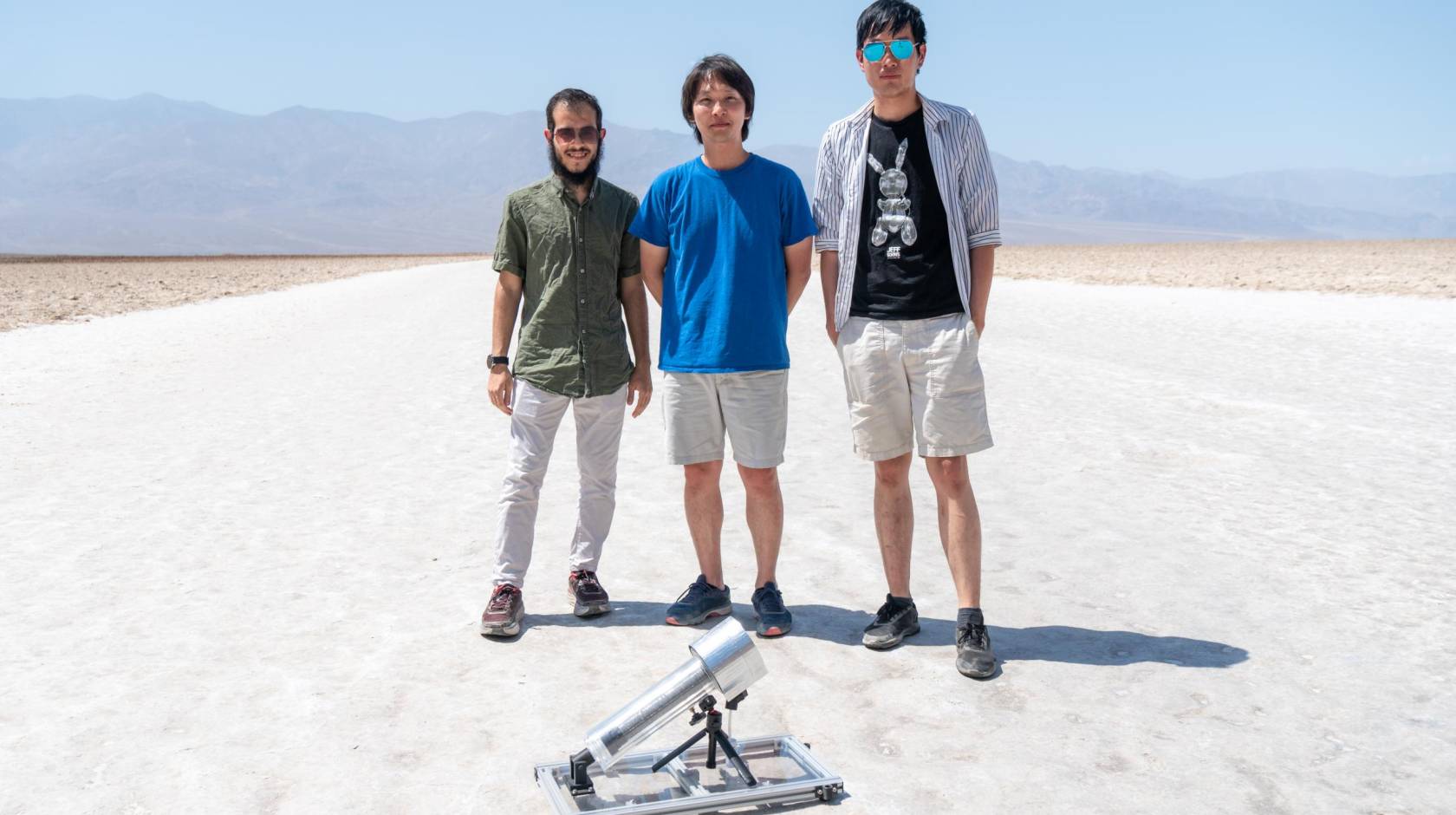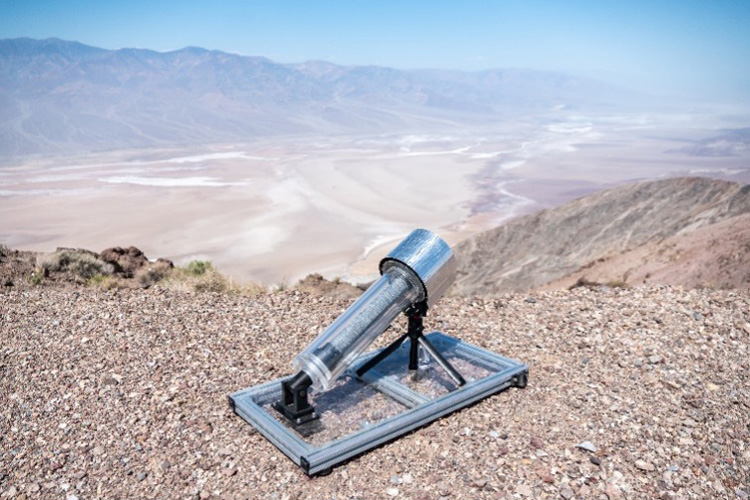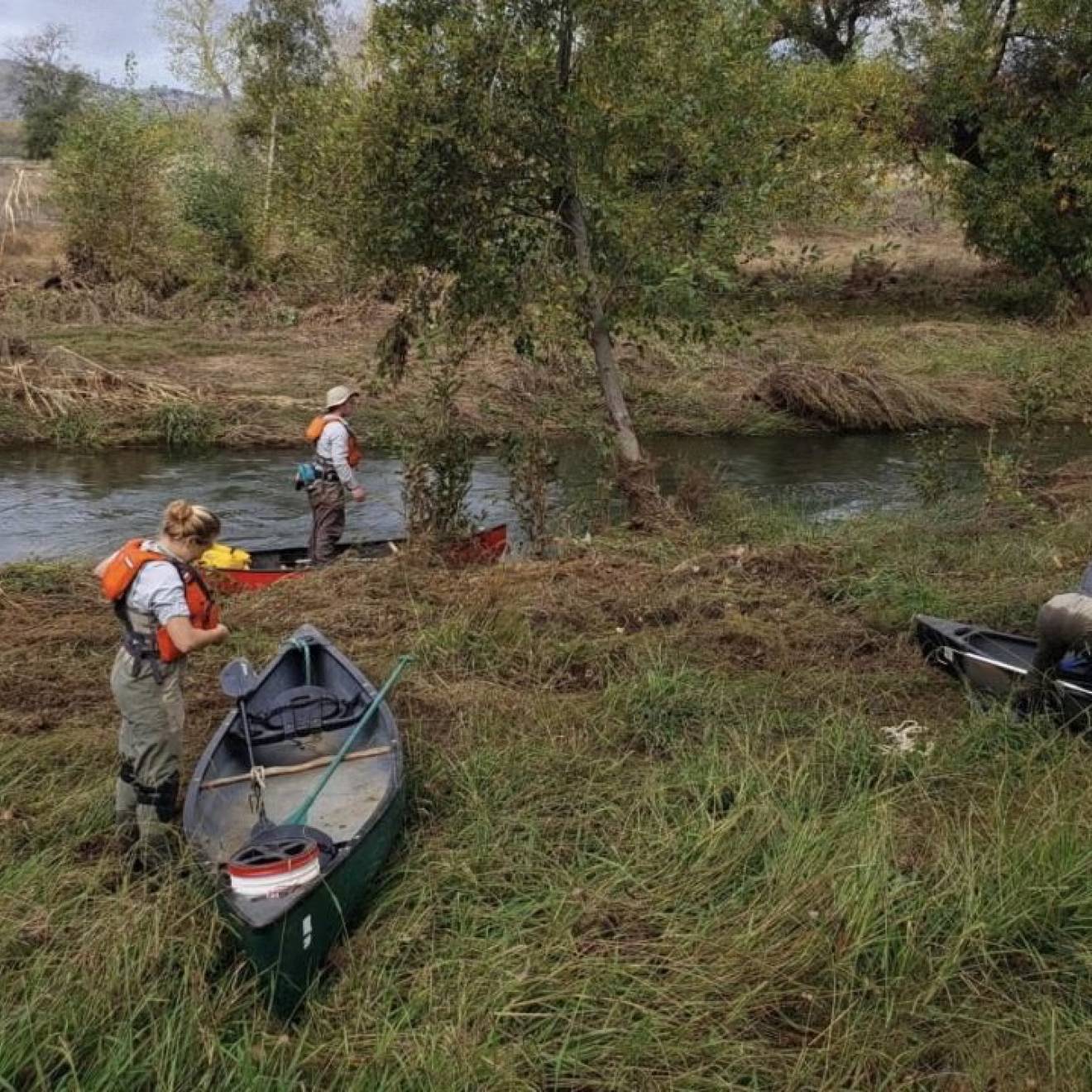Rachel Leven, UC Berkeley

UC Berkeley researchers have designed an extreme-weather proven, hand-held device that can extract and convert water molecules from the air into drinkable water using only ambient sunlight as its energy source, a study published in Nature Water this month shows.
This atmospheric water harvester used an ultra-porous material known as a metal-organic framework (MOF) to extract water repeatedly in the hottest and driest place in North America, Death Valley National Park. These tests showed the device could provide clean water anywhere, addressing an urgent problem, as climate change exacerbates drought conditions.
“Almost one-third of the world’s population lives in water-stressed regions. The UN projects in the year 2050 that almost 5 billion people on our planet will experience some kind of water stress for a significant part of the year,” said Omar Yaghi, the UC Berkeley chemistry professor who invented MOFs and is leading this study. “This is quite relevant to harnessing a new source for water.”
Other kinds of materials such as hydrogels, zeolites or salts cannot operate in low-humidity conditions, in an energy-efficient manner and with a high capacity all at once. MOF-powered harvesters can, making them an exceptionally powerful tool to address water scarcity issues related to anything from drinking water to agriculture. This technology can also be used to secure pure water in regions where water is abundant, but not clean.
The study illustrates one way specially-designed MOFs could help society combat and adapt to climate change. Experts at the College of Computing, Data Science, and Society’s Bakar Institute of Digital Materials for the Planet (BIDMaP) are using data science and machine learning to accelerate and scale up the designing of these molecules, materials and devices.
“What we’re doing at BIDMaP is creating what I call the ‘digital innovation cycle’ to connect the molecule, the material and how the material is configured and fits into the device including the actual device design, its efficiency and performance,” said Yaghi, co-director and chief scientist of BIDMaP. “All of these are connected, and each part has to be optimized to get the highest performance.”
The authors of the study, “MOF water harvester produces water from Death Valley desert air in ambient sunlight,” are Woochul Song, Zhiling Zheng, Ali Alawadhi and Yaghi. They are affiliated with Berkeley’s Department of Chemistry, Kavli Energy NanoScience Institute and BIDMaP. Song left Berkeley this year to join Pohang University of Science and Technology.
Water harvesting and productivity
Berkeley researchers tested the device in Berkeley, Calif., and Death Valley National Park in California. The MOF-powered extracted water repeatedly in both locations, despite extremely low-humidity conditions and wide-ranging daily temperatures in Death Valley.

It is also extremely efficient at harvesting water, releasing as drinking water 85 to 90 percent of the water it captures as atmospheric vapor. It harvested up to 285 grams of water per kilogram of metal-organic framework in a day, the equivalent of a cup of water. The MOF can continue to operate for many cycles over many years without being replenished or modified. At the end of its lifetime, the MOF can be disassembled and reassembled in water with zero discharge and in a sustainable manner.
The team of experts that developed the MOF and the device were excited about what this means for the environment. One of the features that differentiates it from other clean-water generating technologies is that it is powered entirely by ambient sunlight and doesn’t require additional power sources to run. That means operating it doesn’t produce any planet-warming emissions.
It’s also smaller than the past MOF-powered harvester and can fit in a handbag. Despite the size change, the device is even more energy-efficient. It produced 200 grams of clean water per square meter of water vapor, more than three-fold the water productivity rate of an earlier iteration by Yaghi’s team of a MOF-powered harvester.

Omar Yaghi, the inventor of MOFs, led the study on MOF-powered water harvesters that was published July 6 in Nature Water.
There will likely be further developments in efficiency, size, and scale for this early prototype. Yaghi said he could see one day a widespread adoption of household-based MOF-powered water harvesters, and community-scale water harvesters, with the help of data science and machine learning. Those could be in kitchens or even next to air conditioners to supply homes with clean water for cooking and cleaning. Some companies are already working on this, he said.
“It gives individuals water independence,” said Yaghi.

